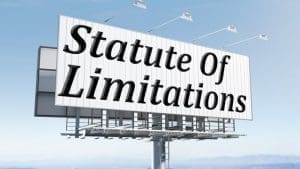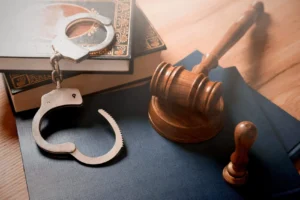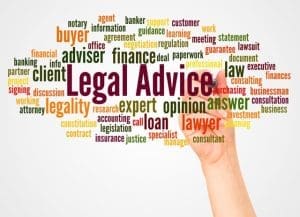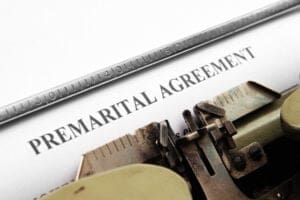What steps should you take to create how-to legal videos that explain processes clearly
Legal professionals frequently ask, “What specific steps should I take to create how-to legal videos that clearly explain complex processes to clients?” The answer lies in understanding that effective legal video creation requires the same methodical approach attorneys use in case preparation: thorough planning, precise execution, and careful attention to detail. Modern law firms that master video content creation gain significant competitive advantages in client acquisition, professional credibility, and market positioning. Unlike traditional marketing methods that rely on written content or static presentations, video allows attorneys to demonstrate their expertise while building personal connections with potential clients who increasingly expect visual, accessible explanations of legal processes.
The legal profession has witnessed a fundamental shift in how clients consume information and evaluate potential representation. Today’s clients research attorneys online before making contact, watching videos to assess communication skills, expertise, and approachability. This behavioral change creates both opportunities and obligations for legal professionals who must adapt their communication strategies to meet evolving client expectations while maintaining the professional standards that define competent legal practice.
What Makes Legal Process Videos Different from General Educational Content?
Legal process videos serve distinct purposes that differentiate them from general educational or marketing content. These videos must balance accessibility with accuracy, ensuring that complex legal procedures become understandable without oversimplifying critical details that could mislead viewers. The educational video format for legal content requires attorneys to maintain professional credibility while making information digestible for non-lawyers who may be experiencing legal issues for the first time.
The stakes involved in legal process explanations demand higher standards of accuracy than typical business content. When attorneys explain procedures like filing for bankruptcy, navigating divorce proceedings, or understanding criminal defense processes, viewers often make important decisions based on this information. This responsibility requires careful attention to disclaimers, scope limitations, and clear guidance about when professional consultation becomes necessary.
Professional responsibility considerations also shape legal video content in ways that don’t apply to other industries. Attorneys must avoid creating attorney-client relationships through video content, ensure compliance with advertising rules in their jurisdictions, and maintain confidentiality when discussing case examples or procedural illustrations. These ethical obligations influence every aspect of video planning, production, and distribution.
The legal profession’s emphasis on precedent and established authority creates additional requirements for process videos. Unlike business or lifestyle content that can rely on personal experience or general best practices, legal videos must reflect current law, accurate procedural requirements, and jurisdiction-specific variations that affect how processes actually work in practice.
How Should Attorneys Define Their Target Audience for Legal Process Videos?
Understanding your audience represents the foundational step in creating effective legal process videos, requiring the same analytical approach attorneys use when preparing for jury selection or client consultation. Target audience identification for legal videos involves multiple dimensions beyond basic demographics, including legal sophistication levels, emotional states, and specific procedural needs that bring viewers to seek legal information.
The most effective legal process videos address specific audience segments rather than attempting to serve all potential viewers simultaneously. A video explaining personal injury claim procedures should target accident victims who may be dealing with insurance companies for the first time, while a business formation video should address entrepreneurs who understand basic business concepts but need guidance on legal requirements and procedural steps.
Client journey mapping helps attorneys understand where potential viewers encounter their content and what information they need at different stages of their legal situations. Someone researching divorce procedures early in their decision-making process needs different information than someone who has already decided to file and needs specific procedural guidance. This understanding shapes content focus, tone, and calls to action that align with viewer needs.
Geographic considerations add another layer to audience definition for legal process videos. State laws, local court procedures, and jurisdictional variations significantly affect how legal processes work in practice. Attorneys must decide whether to create jurisdiction-specific content that serves local audiences or broader educational content that addresses general principles while noting the need for local legal consultation.
The emotional context surrounding legal issues also influences audience definition and content approach. Viewers researching criminal defense procedures face different emotional pressures than those exploring estate planning options. Understanding these emotional contexts helps attorneys craft content that acknowledges viewer concerns while providing practical, actionable information.
What Planning Framework Ensures Comprehensive Legal Process Coverage?
Effective legal process videos require systematic planning that mirrors the thoroughness attorneys bring to case preparation and legal research. Content planning frameworks for legal videos must address scope definition, procedural accuracy, and logical sequencing that guides viewers through complex processes without overwhelming them with unnecessary detail or leaving critical gaps in understanding.
The most successful legal process videos begin with comprehensive process mapping that identifies every significant step, decision point, and potential variation in the procedure being explained. This mapping process helps attorneys identify which elements require detailed explanation, which can be summarized briefly, and where viewers might need additional resources or professional consultation.
Script development for legal process videos demands the same precision attorneys use in brief writing, with clear thesis statements, logical progression, and compelling conclusions that motivate appropriate action. Unlike conversational legal explanations that can adapt to listener questions and reactions, video scripts must anticipate viewer needs and address potential confusion proactively.
Topic segmentation represents another critical planning consideration for legal process videos. Complex procedures like business formation or estate planning often require multiple videos that address different aspects of the overall process. This segmentation allows attorneys to create focused content that serves specific viewer needs while building comprehensive libraries that establish expertise across entire practice areas.
The planning framework must also address production logistics, including filming schedules, equipment needs, and post-production requirements that affect content quality and professional presentation. Attorneys who approach video production with the same systematic planning they use for complex litigation often achieve better results than those who attempt informal, unstructured approaches.
How Do You Structure Legal Process Explanations for Maximum Clarity?
Structuring legal process explanations requires the same logical organization attorneys use in legal writing, with clear introductions that establish context, systematic development of key points, and conclusions that provide actionable guidance. Video structure optimization for legal content must balance comprehensive coverage with viewer attention spans, ensuring that critical information receives appropriate emphasis without losing audience engagement.
The most effective legal process videos follow a modified version of the IRAC method familiar to all attorneys: Issue identification, Rule explanation, Application to common scenarios, and Conclusion with next steps. This structure provides familiar organization for legal professionals while creating logical flow that non-lawyers can follow easily.
Opening segments of legal process videos must accomplish multiple objectives simultaneously: capturing viewer attention, establishing attorney credibility, and clearly defining what the video will and will not cover. Effective openings often begin with common questions or scenarios that bring viewers to seek information, immediately demonstrating relevance and understanding of viewer needs.
The body of legal process videos should progress logically through procedural steps, using clear transitions that help viewers understand relationships between different phases of the process. Each major section should include practical examples that illustrate abstract concepts while avoiding confidential information or details that could compromise client privacy.
Visual organization tools like on-screen text, graphics, and structured layouts help viewers follow complex explanations and retain important information. These visual elements should complement rather than compete with verbal explanations, providing reinforcement and clarity without creating distraction or confusion.
Conclusion segments must provide clear guidance about next steps while maintaining appropriate boundaries between educational content and legal advice. Effective conclusions often include specific recommendations about when to seek professional consultation, what information to gather before attorney meetings, and how to evaluate different legal options.
What Technical Considerations Affect Legal Video Production Quality?
Technical production quality significantly impacts viewer perception of attorney competence and professionalism, requiring the same attention to detail that attorneys bring to court appearances and client presentations. Production quality standards for legal videos must meet professional expectations while remaining achievable for attorneys who may lack extensive video production experience or resources.
Audio quality represents the most critical technical factor in legal video production, as poor sound quality immediately undermines professional credibility and makes content difficult to follow. Legal professionals should invest in quality microphones and recording environments that eliminate background noise, echo, and other audio distractions that interfere with clear communication.
Lighting considerations for legal videos require careful attention to professional appearance and visual clarity. Attorneys should ensure adequate, even lighting that eliminates harsh shadows while presenting themselves in ways that convey competence and approachability. Natural lighting often works well for legal content, though supplemental lighting may be necessary for consistent quality.
Camera positioning and framing affect viewer perception of attorney authority and engagement. Professional legal videos typically use eye-level camera angles that create natural conversation dynamics while avoiding extreme close-ups or distant shots that reduce personal connection. Stable camera positioning prevents distracting movement that can detract from content focus.
Background selection for legal videos should reinforce professional credibility without creating distraction or visual clutter. Many successful legal professionals use simple, clean backgrounds that focus attention on the speaker while suggesting competence and organization. Law library settings, professional offices, or neutral backgrounds often work well for legal content.
Post-production considerations include editing techniques that maintain professional pacing while eliminating unnecessary pauses, verbal fillers, or technical errors that reduce content quality. Professional editing can significantly improve final video quality, though attorneys should ensure that editing maintains authentic communication style rather than creating artificial or overly polished presentations.
How Should Attorneys Optimize Legal Videos for Search Engine Visibility?
Search engine optimization for legal videos requires understanding how potential clients search for legal information and what factors influence video visibility in search results. SEO optimization strategies for legal content must balance technical requirements with authentic, helpful content that serves genuine client needs rather than merely attempting to manipulate search rankings.
Keyword research for legal videos should focus on the specific terms potential clients use when seeking information about legal processes, rather than the technical language attorneys typically use in professional contexts. Tools like Google’s Keyword Planner can help identify common search terms, though attorneys should also consider the conversational language clients use when describing their legal situations.
Video titles for legal content should clearly indicate the specific process or topic being addressed while incorporating relevant keywords that potential clients might use in searches. Effective titles often mirror the questions clients ask during initial consultations, such as “How to File for Divorce in California” or “What Happens During a Personal Injury Lawsuit.”
Video descriptions provide opportunities to include additional keywords and context that help search engines understand content relevance while providing viewers with clear expectations about what the video covers. Descriptions should include relevant practice area keywords, geographic terms when appropriate, and clear explanations of the video’s educational value.
Transcript creation serves dual purposes for legal videos: improving accessibility for viewers with hearing difficulties and providing search engines with text content that can be indexed and ranked. Accurate transcripts that include relevant keywords can significantly improve video search visibility while serving important accessibility functions.
Thumbnail optimization affects click-through rates and viewer engagement, requiring professional images that clearly convey video content while maintaining attorney credibility. Effective thumbnails often include clear text overlays that indicate the specific legal process being discussed, combined with professional attorney photos that suggest competence and approachability.
What Compliance and Ethical Considerations Govern Legal Video Content?
Legal video content must comply with professional responsibility rules that govern attorney advertising, client confidentiality, and professional competence standards. Ethical compliance for legal videos requires careful attention to jurisdiction-specific rules while maintaining educational value that serves legitimate public interests in legal information access.
Advertising regulations vary significantly across jurisdictions, with some states requiring specific disclaimers, approval processes, or content restrictions for attorney marketing materials. Legal professionals must research applicable rules in their practice jurisdictions and ensure that video content complies with all relevant requirements before publication or distribution.
Client confidentiality obligations affect how attorneys can discuss legal processes in video content, particularly when using examples or case studies to illustrate procedural points. Attorneys must ensure that any specific examples used in videos cannot be traced to actual clients or cases, requiring careful attention to detail modification and hypothetical scenario creation.
Professional competence standards require attorneys to ensure accuracy in all educational content, including video explanations of legal processes. This obligation extends beyond avoiding obvious errors to ensuring that content reflects current law, acknowledges jurisdictional variations, and provides appropriate guidance about the limitations of general educational information.
Disclaimer requirements for legal videos typically include clear statements that content is educational rather than legal advice, that attorney-client relationships are not created through video viewing, and that viewers should seek professional consultation for specific legal situations. These disclaimers should be prominent and clear rather than buried in fine print or rushed through quickly.
Record-keeping obligations may apply to legal video content in some jurisdictions, requiring attorneys to maintain copies of published videos and related materials for specified periods. These requirements help ensure compliance with professional responsibility rules while providing documentation for any regulatory inquiries about advertising content.
How Can Attorneys Measure the Effectiveness of Legal Process Videos?
Measuring legal video effectiveness requires tracking metrics that align with professional goals while providing actionable insights for content improvement and strategic planning. Performance measurement for legal videos should focus on meaningful indicators of client engagement, lead generation, and professional reputation enhancement rather than vanity metrics that don’t correlate with business outcomes.
Engagement metrics like view duration, completion rates, and viewer interaction provide insights into content quality and audience interest. Legal videos that maintain viewer attention throughout their duration typically indicate effective content structure and relevant information delivery. Low completion rates may suggest content that is too long, poorly organized, or not sufficiently focused on viewer needs.
Lead generation tracking helps attorneys understand which videos contribute most effectively to client acquisition and business development. This tracking might include monitoring contact form submissions, consultation requests, or phone calls that result from video viewing. Effective tracking systems help identify which topics and presentation styles generate the most qualified leads.
Geographic analytics provide valuable insights for attorneys who serve specific geographic markets, showing where video viewers are located and whether content successfully reaches target audiences. This information helps attorneys understand their market reach while identifying opportunities for geographic expansion or local market development.
Social sharing and referral metrics indicate content quality and professional reputation impact. Legal videos that generate significant sharing or referral traffic typically provide exceptional value to viewers while enhancing attorney visibility and credibility within professional and client communities.
Conversion tracking from video views to actual client engagements provides the most meaningful measure of video effectiveness for legal practice development. This tracking requires sophisticated analytics setup but provides crucial insights into which content types and presentation approaches generate the best return on investment for video production efforts.
What Distribution Strategies Maximize Legal Video Reach and Impact?
Effective distribution strategies for legal videos require understanding where potential clients seek legal information and how different platforms serve various audience segments and content types. Distribution optimization for legal content must balance broad reach with targeted delivery to qualified prospects who represent genuine opportunities for client development and professional growth.
Website integration represents the foundation of legal video distribution, with videos embedded on relevant service pages, attorney bio sections, and educational resource areas. Website placement should align with visitor intent and information-seeking behavior, providing relevant videos at points where they add genuine value to the user experience.
YouTube serves as the primary search engine for video content, requiring attorneys to optimize their YouTube presence for legal information searches. Effective YouTube strategies include consistent posting schedules, playlist organization by practice area, and engagement with viewer comments that demonstrate expertise while building community connections.
Social media distribution requires platform-specific approaches that align with different audience expectations and content consumption patterns. LinkedIn works well for professional legal content that targets business audiences, while Facebook may be more effective for consumer-focused legal information like personal injury or family law content.
Email marketing integration allows attorneys to deliver video content directly to existing contacts and newsletter subscribers, providing opportunities for deeper engagement with prospects who have already expressed interest in legal services. Email distribution can include video links, embedded players, or video thumbnails that drive traffic to hosted content.
Professional networking opportunities include sharing video content through bar association channels, legal professional groups, and industry publications that reach colleagues who might provide referrals or collaborative opportunities. This distribution approach builds professional reputation while expanding referral networks.
How Should Law Firms Develop Sustainable Video Content Production Systems?
Sustainable video production requires systematic approaches that integrate content creation into regular law firm operations without overwhelming attorney schedules or compromising client service quality. Production system development for legal videos must balance consistency with efficiency, ensuring regular content creation while maintaining professional standards and educational value.
Content batching strategies allow attorneys to record multiple videos during dedicated production sessions, maximizing efficiency while maintaining consistent quality and presentation style. Batching might involve recording several related videos on the same topic area or creating multiple short videos that address different aspects of common client questions.
Template development for legal videos creates consistent structure and branding while reducing the planning time required for each new video. Templates might include standard opening and closing segments, consistent visual elements, and established formats for different types of legal content like process explanations, FAQ responses, or case study discussions.
Workflow systematization helps law firms integrate video production into existing operations through clear processes for topic selection, script development, production scheduling, and post-production completion. Systematic workflows ensure consistent quality while preventing video production from disrupting essential client service activities.
Resource allocation for video production requires careful consideration of time investment, equipment costs, and potential return on investment for different types of legal content. Firms should develop realistic budgets and schedules that support consistent production without creating unsustainable demands on attorney time or firm resources.
Quality control processes ensure that all published video content meets professional standards while accurately representing current law and firm capabilities. These processes might include peer review, fact-checking procedures, and final approval workflows that maintain consistency with firm branding and professional reputation goals.
What Emerging Trends Are Shaping Legal Video Content Strategy?
The legal video landscape continues evolving as technology advances and client expectations change, requiring attorneys to stay current with trends that affect content effectiveness and professional opportunities. Trend awareness for legal video content helps attorneys make informed decisions about production investments while positioning themselves advantageously for future developments in legal marketing and client communication.
Voice search optimization increasingly influences how potential clients discover legal video content, with more searches conducted through voice assistants and conversational queries. Legal videos optimized for voice search often use natural language titles and descriptions that mirror how people actually speak when seeking legal information.
Mobile viewing preferences continue growing, requiring legal videos optimized for smartphone viewing with clear audio, readable text, and engaging visual presentation that works effectively on smaller screens. Mobile optimization affects everything from video length to visual design choices that ensure content remains accessible across different viewing contexts.
Interactive video elements like clickable annotations, embedded forms, and viewer polls provide opportunities for enhanced engagement while gathering valuable information about viewer interests and needs. These interactive features can help attorneys understand their audience better while providing more personalized content experiences.
Live streaming capabilities offer opportunities for real-time legal education and client engagement through platforms like Facebook Live, LinkedIn Live, and YouTube Live. Live content can include Q&A sessions, legal update discussions, and educational presentations that build community while demonstrating expertise.
Artificial intelligence integration in video production and optimization tools provides opportunities for improved efficiency in content creation, editing, and distribution. AI tools can assist with transcript generation, keyword optimization, and performance analysis while maintaining the human expertise and judgment essential for quality legal content.
Conclusion: Building Professional Excellence Through Strategic Video Communication
Creating effective how-to legal videos requires the same systematic approach, attention to detail, and commitment to excellence that defines competent legal practice. Attorneys who master video content creation gain powerful tools for client education, professional development, and practice growth while serving important public interests in legal information accessibility.
The conservative principles that guide effective legal practice—thorough preparation, accurate information, and client-focused service—apply equally to video content creation. Attorneys should approach video production with the same professionalism they bring to court appearances, client consultations, and legal document preparation, ensuring that all content reflects the highest standards of competence and integrity.
Professional responsibility obligations extend to video content, requiring attorneys to maintain accuracy, comply with advertising regulations, and provide appropriate disclaimers that protect both attorney and viewer interests. These ethical considerations should guide every aspect of video planning, production, and distribution rather than being afterthoughts addressed during final review.
The investment in quality legal video content pays dividends through enhanced client relationships, improved professional reputation, and expanded opportunities for practice development. Attorneys who commit to systematic, professional approaches to video creation often find that the skills and systems developed for video production enhance other aspects of their legal practice as well.
Sustainable success in legal video content requires long-term commitment to quality, consistency, and continuous improvement rather than sporadic efforts that fail to build meaningful audience relationships or professional reputation. The most successful legal professionals treat video content as an integral part of their professional development and client service strategy rather than an optional marketing activity.
The legal profession’s embrace of video communication reflects broader changes in how clients seek information and evaluate professional services. Attorneys who adapt effectively to these changes while maintaining traditional professional values position themselves advantageously for continued success in an evolving legal marketplace.
The principles and strategies outlined for legal video creation serve broader purposes beyond marketing and client acquisition. Quality legal video content contributes to public legal education, improves access to legal information, and helps bridge the gap between complex legal systems and the citizens they serve. This public service aspect of legal video content aligns with the profession’s fundamental commitment to justice and public welfare.
Attorneys who master video communication skills often find that these abilities enhance their effectiveness in other professional contexts, including client counseling, courtroom advocacy, and professional networking. The clarity of thought, organization skills, and communication techniques developed through video creation translate directly to improved performance across all aspects of legal practice.
The future of legal practice will likely include video communication as a standard expectation rather than an optional enhancement. Attorneys who develop these skills now position themselves advantageously for a professional environment where video literacy becomes as essential as traditional legal research and writing abilities. This forward-thinking approach reflects the conservative principle of prudent preparation for anticipated challenges and opportunities.
- How to Create a Video Content Creation Strategy for Your Law Firm
- Some Tips for Making Educational Videos for Legal Professionals
- Video Marketing for Lawyers: Complete Guide
- SEO for Lawyer Videos: How to Optimize Your Video Content
- 4 Tips for Video Marketing and SEO for Lawyers
- Legal Video Marketing Tutorial
- Attorney Video Marketing and Production Strategies for Law Firms
- Voice Search SEO for Law Firms Marketing Guide
- FlexClip Law Video Creation Tool
- Video Marketing Strategies for Law Firms: Best Practices Guide
- Step by Step Guide to Producing High Quality Legal Explainer Videos
- Lights Camera Legal Action: How Video Marketing Boosts Law Firm Success
- Quick Guide to Attorney Video Marketing
- Forbes: Tips to Create Right Video Content for Law Firms
- Legal Explainer Videos: Simplify Law and Boost Firm Growth
- How to Use Video Content for Legal Client Acquisition
- How to SEO Lawyer Videos for Search Engines and Client Engagement
- Lat’s Legal Library: Conservative Legal Commentary
- Innovating Justice Remote Justice Monograph PDF
- Reddit: How to Make Video That Can Be Used as Legal Evidence
- Understanding Courts NCSC Video Series
- Enhancing Legal Literacy Through Video Content: Modern Approach to Understanding Law
- Public Knowledge: Conservative Political Playbook Driving FTC Platform Censorship Inquiry
- Cato Institute: Why Government Should Not Regulate Content Moderation
- The Atlantic: Legal Right to Post Free Speech Social Media
- ITIF: Conservative Weaponization of Government Against Tech
- Cornell Law Review: Compelling Code First Amendment Argument
- Columbia Law Review: Free Speech and Democracy in Video Age
- Library of Congress Legal Document
- Legal Video Content Educational Tutorial


















